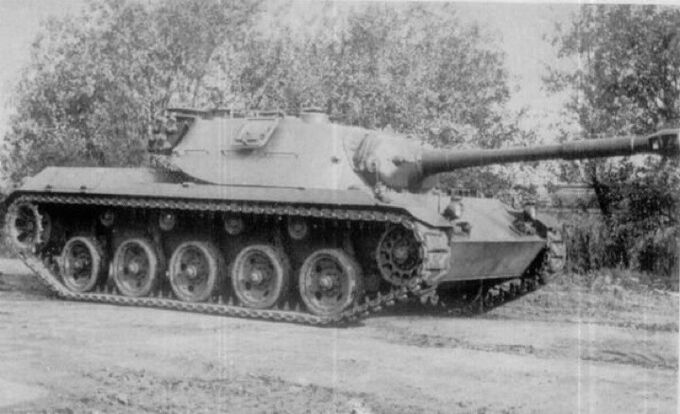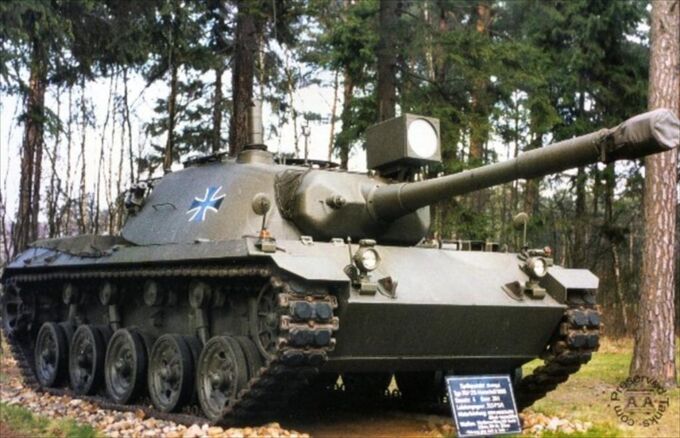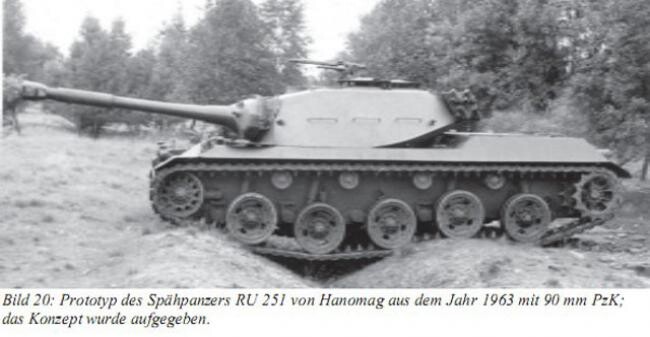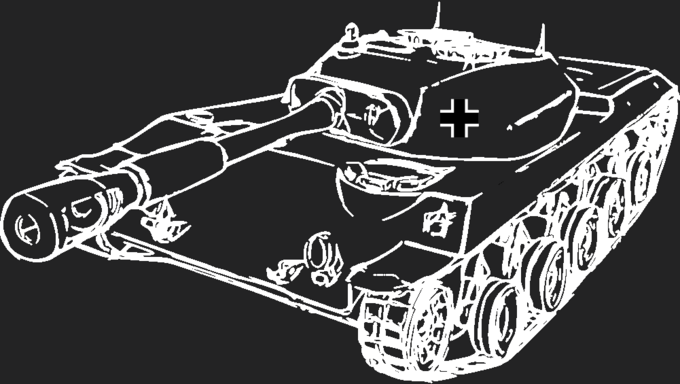In the early 1960s, the West German Bundeswehr used the aging M41 Walker Bulldog as their primary reconnaissance tank. There was a clear need for a more modern, capable tank to fulfill this role. As a result, the Spähpanzer Ru 251, a light reconnaissance tank based on the Kanonenjagdpanzer 4-5 tank destroyer, was developed as a potential replacement. The Ru 251 was a fast, agile light tank, but it never reached full production, as it was overshadowed by the emerging Leopard 1 main battle tank.
Design and Development
The development of the Spähpanzer Ru 251 began in 1960 as part of a collaborative project between West Germany, France, and later on Italy, called the Europanzer project. The aim of this project was to design a standardized NATO main battle tank capable of countering the growing threat posed by Soviet armored forces, while also reducing production costs and logistical challenges across NATO member states.
However, the project faced significant challenges due to differing national priorities and technical requirements, which led to the project splitting into independent developments. This eventually resulted in the development of the Leopard 1 for Germany, and the AMX-30 for France, both of which would become mainstays in their respective armies.
While the focus of the Bundeswehr was on building a modern main battle tank, there was also the need for a highly mobile light tank. The Spähpanzer Ru 251 was conceived as the solution to this need. It was based on the Kanonenjagdpanzer 4-5, a tank destroyer that had already proven its mobility and effectiveness in combat. By using many of the Kanonenjagdpanzer’s components, engineers were able to produce a prototype that incorporated a variety of advanced features, most notably the powerful 90mm Rheinmetall BK 90 L/40 cannon, which is a version of the American 90mm M36 cannon mounted on the M47 Patton.
The 90mm Rheinmetall BK 90 L/40 cannon was mounted on a fully-rotating cast turret, similar to that found on later-generation tanks. This design was aimed at providing a platform with the firepower to defend itself in hostile environments and engaging Soviet light to medium armor, while maintaining the mobility needed for reconnaissance.
Mobility and Armament
The Spähpanzer Ru 251 was powered by a 650-horsepower diesel engine, giving it an impressive power-to-weight ratio of 25.4 horsepower per ton. This enabled the Ru 251 to reach speeds of up to 80 km/h (or 49.7 mph), making it one of the fastest light tanks of its kind. Its excellent mobility would allow it to quickly scout enemy positions, flank heavier tanks, and engage in hit-and-run tactics.
The 90mm Rheinmetall BK 90 L/40 cannon was another key feature of the Ru 251. Capable of firing APCR, HEAT, HESH, and HE, the gun was well suited for its role as a reconnaissance tank.
However, like many light tanks, the Ru 251 lacked heavy armor, with only 20 mm of protection on the hull. This made it vulnerable to enemy fire; however, the hull was designed to shield the crew from small arms fire and shrapnel while maintaining the tank’s mobility, as any excess armor would only hinder its mobility.
Prototype and Trials
By 1963, the first prototype of the Spähpanzer Ru 251 had been built, with the second prototype most likely being built in 1964. Given the weight and mobility requirements for a reconnaissance tank, the Ru 251’s lightweight design and powerful 90mm gun set it apart from other reconnaissance tanks of the era.
However, despite its success in trials, the Ru 251’s future was clouded by the growing prominence of the Leopard 1 main battle tank, as it was already being readied for serial production, while the Ru 251 was still in its prototype stage. With the Bundeswehr directing all available resources toward the development of the Leopard 1 main battle tank, it was deemed unnecessary to pursue the further development of the Ru 251, as it was too similar to the Leopard 1. The decision to cancel the project was made in 1965, and the Bundeswehr continued using the M41 Walker Bulldog in the reconnaissance role until 1966, when all M41s had been retired and replaced by the much heavier M48 Patton and Leopard 1 in armored reconnaissance battalions.
Note: The work on the Spähpanzer Ru 251 prototypes was strictly confidential, and details of its development are still kept under wraps by the Bundeswehr as of today.
Images:
Werner Oswald “Kraftfahrzeuge und Panzer der Reichswehr, Wehrmacht und Bundeswehr”
Khaled, licensed under CC BY-SA 4.0, source: Drawing showing a German Ru 251 tank, Changes were made to invert colors and add a background.





